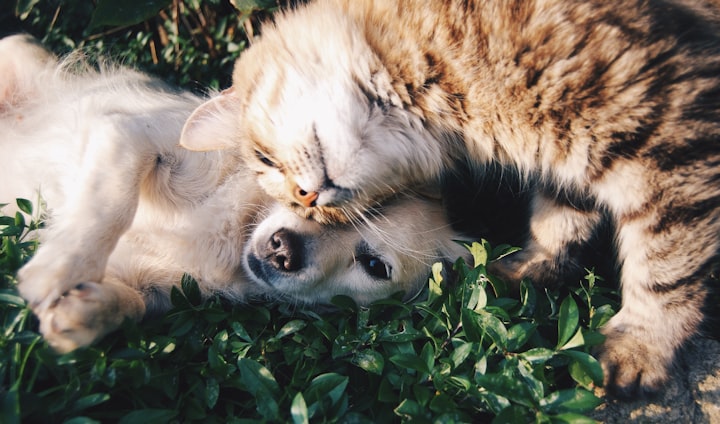Pet food toxicities
Keeping Your Pets Safe from Harmful Ingredients

As pet owners, we always want the best for our furry friends, and that includes providing them with safe and nutritious food. However, it's important to be aware that certain ingredients or contaminants in pet food can pose a risk to their health. Pet food toxicities can occur when pets consume food that contains harmful substances or has been contaminated. In this article, we will delve deeper into some common pet food toxicities, explore why they happen, and provide practical tips to protect your beloved companions.
Onions and Garlic Toxicity: Everyday Ingredients with Hidden Dangers
Onions and garlic, commonly used in our cooking, can be toxic to pets. These ingredients contain compounds that can damage their red blood cells, leading to a condition called hemolytic anemia. Cats are particularly susceptible to onion and garlic toxicity, but it can also affect dogs. While large amounts are more likely to cause severe effects, even small quantities consumed over time can be harmful. Symptoms of onion and garlic toxicity in pets include weakness, pale gums, vomiting, diarrhea, and an increased heart rate. It's important to avoid giving your pets foods that contain these ingredients and to store them securely to prevent accidental ingestion.
Aflatoxin Poisoning: The Moldy Menace
Aflatoxins are toxic substances produced by certain molds that can contaminate grains, nuts, and other ingredients used in pet food manufacturing. High levels of aflatoxin in pet food can cause liver damage and pose a significant risk, particularly for dogs. The molds that produce aflatoxins can grow in crops before harvest or during improper storage conditions. Pet food manufacturers implement strict quality control measures to minimize the risk of aflatoxin contamination. However, occasional incidents can still occur. Signs of aflatoxin poisoning in pets include a loss of appetite, lethargy, yellowing of the skin and eyes (jaundice), and digestive problems. Pet owners should stay informed about recalls and follow recommended guidelines for storing and using pet food to minimize the risk of aflatoxin exposure.
Ethylene Glycol (Antifreeze) Ingestion: A Sweet but Deadly Temptation
Ethylene glycol, commonly found in antifreeze and certain coolants, poses a grave danger to pets. This toxic substance has a sweet taste that can attract animals, leading to accidental ingestion. Even a small amount can be extremely toxic and potentially fatal for pets. Ethylene glycol poisoning can occur when pets come into contact with spills or have access to improperly stored products. If ingested, ethylene glycol can cause kidney failure, seizures, and a range of severe health complications. If you suspect that your pet has consumed antifreeze, it's crucial to seek immediate veterinary assistance. Preventing access to products containing ethylene glycol and cleaning up spills promptly can help protect your pets from this hazardous substance.
Xylitol Toxicity: The Hidden Danger in Sugar-Free Treats
Xylitol, an artificial sweetener used in various sugar-free products, can be highly toxic to pets, especially dogs. When ingested, xylitol causes a rapid release of insulin in the body, resulting in a sudden drop in blood sugar levels (hypoglycemia). Xylitol is commonly found in chewing gum, candies, baked goods, and other sugar-free treats. It's important to be cautious and keep these products out of your pets' reach. Symptoms of xylitol toxicity in pets may include vomiting, loss of coordination, seizures, and even liver failure. If you suspect your pet has ingested xylitol, seek immediate veterinary care. Prompt treatment is crucial for the best chance of a positive outcome.
Salmonella Contamination: A Hidden Bacterial Danger
Salmonella is a type of bacteria that can cause illness in both humans and animals. Occasionally, pet food can become contaminated with Salmonella, which can lead to pets falling ill. The bacteria can enter the pet food supply chain through contaminated ingredients or improper handling during production. Symptoms of Salmonella poisoning in pets may include diarrhea, vomiting, fever, and lethargy. It's important to handle pet food with care, following proper hygiene practices, and washing your hands after handling pet food to avoid spreading the bacteria. In addition, storing pet food in a clean, dry area and promptly discarding any expired or recalled products can further reduce the risk of contamination.
While incidents of pet food toxicities are relatively rare, it's crucial for pet owners to be aware of the potential risks and take necessary precautions to ensure their pets' well-being. Pet food manufacturers follow strict regulations and implement safety measures to minimize the occurrence of toxicities. However, as responsible caregivers, we can play an active role in safeguarding our furry friends. By staying informed about the ingredients in pet food, handling it safely, and seeking prompt veterinary care if needed, we can protect our pets from harmful substances and enjoy their company for many healthy years to come. Remember, an informed and proactive approach is the key to keeping our pets safe and healthy.





Comments
There are no comments for this story
Be the first to respond and start the conversation.